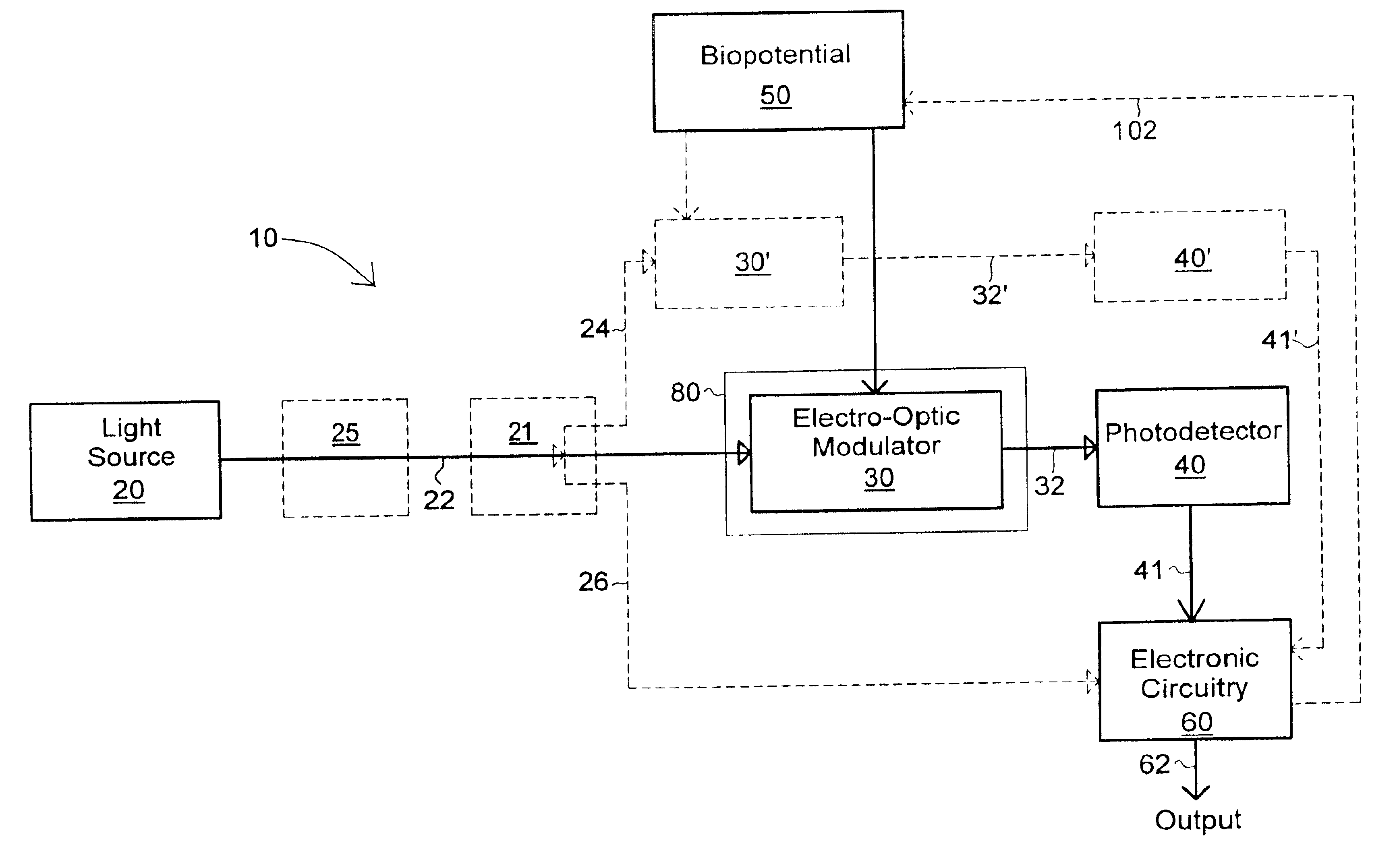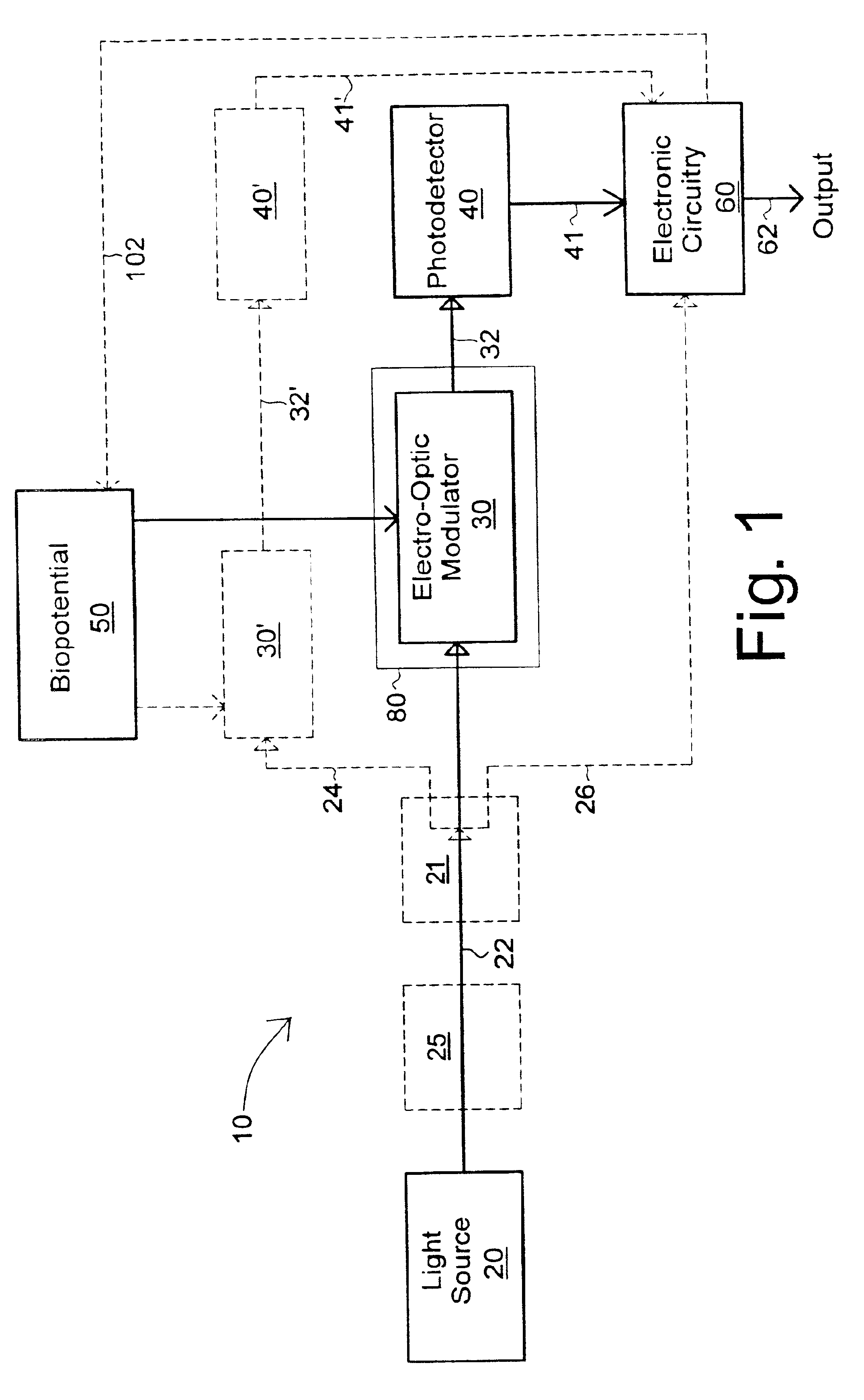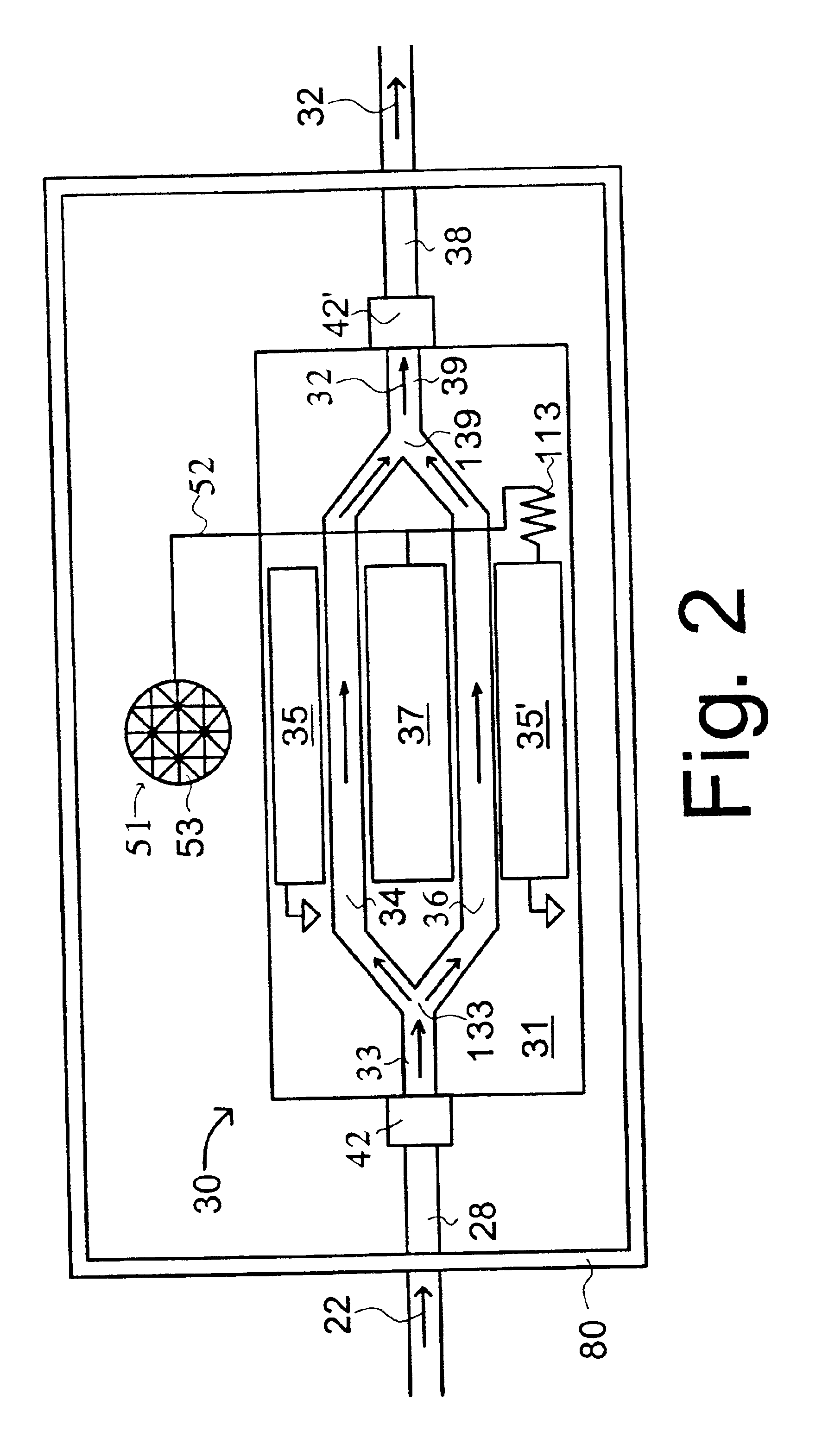High-impedance optical electrode
a high-impedance, optical electrode technology, applied in the field of electrodes, can solve the problems of noisy recording, difficult to fix and remove, and difficult process, and achieve the effect of improving performan
- Summary
- Abstract
- Description
- Claims
- Application Information
AI Technical Summary
Benefits of technology
Problems solved by technology
Method used
Image
Examples
example i
Conventional practice for attaining ECG signals requires removal of clothing as well as application of an electrolyte gel. In the present invention, ECG recordings are taken without removal of clothing thereby eliminating the need for electrolyte gel and also providing optimum comfort to the patient undergoing testing. The ECG is measured by placing the electro-optic modulator 30 on the heart (over the clothes) in the left leg / right ventricle position as seen in FIG. 7. FIG. 28 shows the equivalent impedance of the device 30 with respect to the heart placement. The shunting resistor 113 is shown to have a value of 100 GW thereby increasing the DC stability of the device 30. Since the ECG signal coupling can be capacitive in nature, the signal may also be detected without the use of conducting silicon and with a simple metal electrode, or disk for contact with the skin. A notch filter (not shown) was used in order to block the effects of 60 Hz environmental fields on the ECG waveform...
example ii
Traces taken with the electro-optic module of the current invention of EEG activity is very similar to low impedance electrode data. The EEG pattern is typical of a normal subject showing the eyes open and closed response. As an example, a single electrode (E5GH Astro-Medical Inc. West Warwick, R.I.), and an electro-optic module of the present invention were placed on the occipital lobe 110 in order to measure the brain's alpha wave activity (FIG. 30). FIG. 31 shows the equivalent impedance of the EEG with respect to the device 30. The shunting resistor 113 is shown having a value of 1 GW and thus improves the DC stability of the device 30. A reference electrode 102, such as the Life-Patch, was attached to the ear for grounding purposes. The standard EEG electrode required abrading the patients scalp with acetone whereas the electrode of the current invention 30 required no abrasion techniques. Colloid was applied to the standard electrode in order to get the electrode to stick to t...
PUM
 Login to View More
Login to View More Abstract
Description
Claims
Application Information
 Login to View More
Login to View More - R&D
- Intellectual Property
- Life Sciences
- Materials
- Tech Scout
- Unparalleled Data Quality
- Higher Quality Content
- 60% Fewer Hallucinations
Browse by: Latest US Patents, China's latest patents, Technical Efficacy Thesaurus, Application Domain, Technology Topic, Popular Technical Reports.
© 2025 PatSnap. All rights reserved.Legal|Privacy policy|Modern Slavery Act Transparency Statement|Sitemap|About US| Contact US: help@patsnap.com



